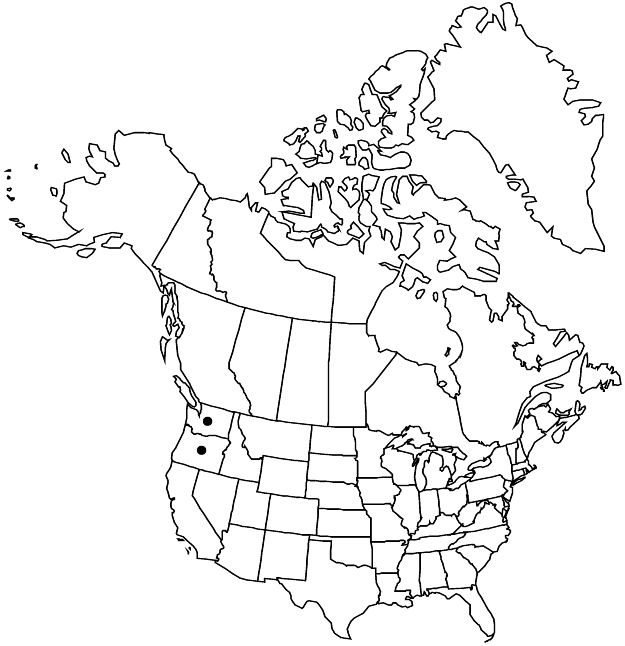Sidalcea nelsoniana
Proc. Biol. Soc. Wash. 32: 41. 1919.
Herbs, perennial, 0.4–1 m, often glaucous, with thick, woody taproot and lateral rhizomes to 500 mm. Stems clustered, erect, base decumbent-ascending, solid or ± hollow in age, usually ± glaucous distally, glabrous or sparsely hirtellous, hairs short, appressed, simple. Leaves basal and cauline; stipules sometimes deciduous, lanceolate to ovate, (4–)7–9(–14) × (1.2–)3–4 mm; petioles of proximal leaves 18–37 cm, 3–5 times as long as blades, distal 5–20 cm, to 1/2–1 times as long as blades; blades: basal reniform to rounded, unlobed and marginally deeply crenate or very shallowly palmately 5–7-lobed, 6–20 × 6–20 cm, base cordate, apex rounded; cauline deeply 5–9-lobed, lobes linear-elliptic to oblong-elliptic, margins usually entire, sometimes toothed, surfaces finely, sparsely hairy, hairs mostly simple. Inflorescences erect, spiciform, proximally open, distally dense, otherwise calyces not conspicuously overlapping except sometimes in bud, branched, 20+-flowered, proximalmost flowers spaced usually to 1 cm apart, not leafy-bracted, elongate, not 1-sided, 10–20 cm; bracts single, purple, mm, hairy; anthers white; stigmas (6 or)7 or 8. Schizocarps 4–5 mm diam.; mericarps (6 or)7 or 8, 2 mm, roughened, sparsely glandular-puberulent apically, sides finely reticulate to faintly rugose, sometimes also on back, to nearly smooth, not pitted, mucro 0.5–1 mm. Seeds 1.5 mm. 2n = 20.
Phenology: Flowering (May–)Jun–Jul(–Sep).
Habitat: Open fields, meadows, fencerows, remnant prairies
Elevation: (40–)100–600(–1300) m
Discussion
Of conservation concern.
Sidalcea nelsoniana is uncommon and persists generally in degraded habitats. It resembles S. campestris and S. virgata, with similar ranges, but is generally less hairy and has a smaller, usually purplish calyx. It has been listed as endangered in Washington and as threatened in Oregon; the number of populations and individuals has greatly declined as a result of land development. It is found in the Willamette Valley area from Multnomah and Washington to Benton and Linn counties in Oregon, and in Cowlitz and Lewis counties in Washington.
Sidalcea nelsoniana is in the Center for Plant Conservation’s National Collection of Endangered Plants.
Selected References
None.
